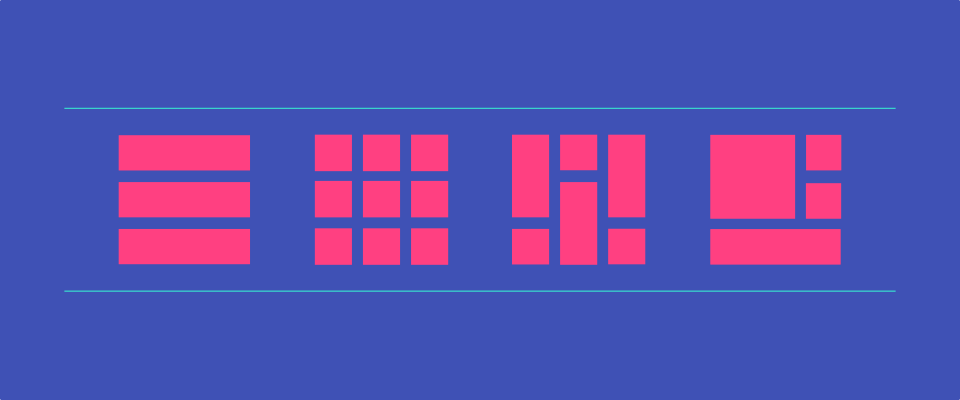
The new TwoWayView
July 31, 2014
What if writing custom view recycling layouts was a lot simpler? This question stuck in my mind since I started writing Android apps a few years ago.
The lack of proper extension hooks in the AbsListView API has been one of my biggest pain points on Android. The community has come up with different layout implementations that were largely based on AbsListView’s code but none of them really solved the framework problem.
So a few months ago, I finally set to work on a new API for TwoWayView that would provide a framework for custom view recycling layouts. I had made some good progress but then Google announced RecyclerView at I/O and everything changed.
At first sight, RecyclerView seemed to be an exact overlap with the new TwoWayView API. After some digging though, it became clear that RecyclerView was a superset of what I was working on. So I decided to embrace RecyclerView and rebuild TwoWayView on top of it.
The new TwoWayView is functional enough now. Time to get some early feedback. This post covers the upcoming API and the general-purpose layout managers that will ship with it.
Creating your own layouts
RecyclerView itself doesn’t actually do much. It implements the fundamental state handling around child views, touch events and adapter changes, then delegates the actual behaviour to separate components—LayoutManager, ItemDecoration, ItemAnimator, etc. This means that you still have to write some non-trivial code to create your own layouts.
LayoutManager is a low-level API. It simply gives you extension points to handle scrolling and layout. For most layouts, the general structure of a LayoutManager implementation is going to be very similar—recycle views out of parent bounds, add new views as the user scrolls, layout scrap list items, etc.
Wouldn’t it be nice if you could implement LayoutManagers with a higher-level API that was more focused on the layout itself? Enter the new TwoWayView API.
TwoWayLayoutManagercode is a simple API on top of LayoutManager that does all the laborious work for you so that you can focus on how the child views are measured, placed, and detached from the RecyclerView.
To get a better idea of what the API looks like, have a look at these sample layouts: SimpleListLayout is a list layout and GridAndListLayout is a more complex example where the first N items are laid out as a grid and the remaining ones behave like a list. As you can see you only need to override a couple of simple methods to create your own layouts.
Built-in layouts
The new API is pretty nice but I also wanted to create a space for collaboration around general-purpose layout managers. So far, Google has only provided LinearLayoutManager. They might end up releasing a few more layouts later this year but, for now, that is all we got.

The new TwoWayView ships with a collection of four built-in layouts: List, Grid, Staggered Grid, and Spannable Grid.
These layouts support all RecyclerView features: item animations, decorations, scroll to position, smooth scroll to position, view state saving, etc. They can all be scrolled vertically and horizontally—this is the TwoWayView project after all ;-)
You probably know how the List and Grid layouts work. Staggered Grid arranges items with variable heights or widths into different columns or rows according to its orientation.
Spannable Grid is a grid layout with fixed-size cells that allows items to span multiple columns and rows. You can define the column and row spans as attributes in the child views as shown below.
<FrameLayout
android:layout_width="match_parent"
android:layout_height="match_parent"
app:colSpan="2"
app:rowSpan="3">
...
</FrameLayout>
Utilities
The new TwoWayView API will ship with a convenience view (TwoWayView) that can take a layoutManager XML attribute that points to a layout manager class.
<org.lucasr.twowayview.widget.TwoWayView
android:layout_width="match_parent"
android:layout_height="match_parent"
app:layoutManager="ListLayoutManager"/>
This way you can leverage the resource system to set layout manager depending on device features and configuration via styles.
You can also use ItemClickSupport to use ListView-style item (long) click listeners. You can easily plug-in support for those in any RecyclerView (see sample).
I’m also planning to create pluggable item decorations for dividers, item spacing, list selectors, and more.
That’s all for now! The API is still in flux and will probably go through a few more iterations. The built-in layouts definitely need more testing.
You can help by filing (and fixing) bugs and giving feedback on the API. Maybe try using the built-in layouts in your apps and see what happens?
I hope TwoWayView becomes a productive collaboration space for RecyclerView extensions and layouts. Contributions are very welcome!